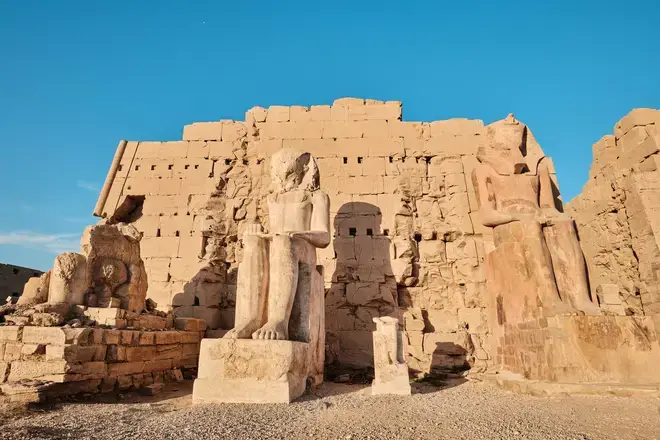The tomb of an Egyptian pharaoh has been found after years of archeologists searching.
The tomb of an Egyptian pharaoh has been found for the first time since the discovery of Tutankhamun more than a century ago.
The tomb of Thutmose II has been found by a joint British-Egyptian archeology mission.
Objects found in the tomb include fragments of jars, used to store perfume and ointments. They also found an inscription with the name of Queen Hatshepsut, the Pharaoh's wife, who was the few female pharaoh's who ruled in their own right.
"This discovery solves a great mystery of ancient Egypt: the location of the tombs of the early 18th dynasty kings," said Pier Litherland, a researcher from the Institute for Archaeological Research at Cambridge University.
It was located by archeologists in the Western Valleys of the Theban Necropolis in Egypt.
Archaeologists believed they had found the tomb of a royal wife. However, the wide staircase and illustrated burial chamber indicated it was likely to be the resting place of a king.
Litherland added: "The tomb of this ancestor of Tutankhamun had never been found because it was always thought to be at the other end of the mountain near the Valley of the Kings.
"The discovery that the burial chamber had been decorated with scenes from the Amduat, a religious text which is reserved for kings, was immensely exciting and was the first indication that this was a king's tomb."
Minister of tourism and antiquities Sherif Fathy said: "This is the first royal tomb to be discovered since the ground-breaking find of King Tutankhamun's burial chamber in 1922.
"It is an extraordinary moment for Egyptology and the broader understanding of our shared human story."
An ancestor of Tutankhamun, whose tomb was found in 1922, Thutmose II died 3,500 years ago and was thought to be buried at the other end of the mountain near the Valley of the Kings.
Thutmose II was the husband as well as the half-brother of Hatshepsut, considered one of Egypt's greatest pharaohs. He is believed to have ruled for around four years, and fathered one child, Thutmose III.
The reign of Thutmose II is thought to date from approximately 1493 to 1479 BCE, but his life has been overshadowed by his more famous father Thutmose I, his wife Hatshepsut (one of the few women who reigned in her own right), and his son, Thutmose III.
The discovery was made by a joint mission formed by the New Kingdom Research Foundation (NKRF), a British independent academic foundation, and the Ministry of Tourism and Antiquities, Egypt, a project affiliated to the McDonald Institute for Archaeological Research at the University of Cambridge.
The discovery is the result of 12 years' work in the Western Valleys.
It previously established the identities of more than 30 royal wives and court women of this period and has excavated a total of 54 tombs in the western part of the Theban mountain in Luxor.
Artefacts discovered in the tomb, including fragments of alabaster jars bearing inscriptions with the names of Thutmose II and his principal wife, Hatshepsut, provided definitive evidence, and are the only artefacts connected with Thutmose II's burial ever found.
Sometime before Year 6 of Thutmose III's reign, archaeological evidence suggests there was a catastrophic flood in this tomb after which the contents were moved to a second tomb.
The discovery by the mission of an intact foundation deposit suggests that this second tomb is hidden in the same valley – casting doubt on the identity of the CG61066 body found in the Royal Cache in 1881 and previously identified as Thutmose II.
The body has been dated consistently as over 30 years of age, but Thutmose II was described as "the falcon in the nest" when he came to throne and ruled just long enough to father Thutmose III before he died.
Mohsen Kamel, assistant field director, said: "The possible existence of a second, and most likely intact, tomb of Thutmose II is an astonishing possibility."

